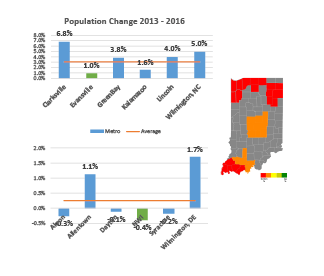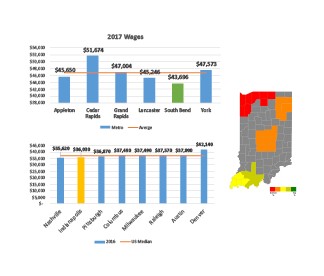Investment Hubs
Why This Legislation is Necessary
Indiana’s local governments are competing while our peers nationally are collaborating, and we are doing so with less revenue to invest in our communities.
Consider this:
- Current state statute incentivizes competition over collaboration, leading local governments to continue trying to survive inside traditional jurisdictional boundaries instead of working together to make strategic investments that benefit regional economies.
- According to 2016 U.S. Census Bureau data, on average, Indiana state and local governments have$7.8 billion less to invest in comparison to the rest of the country.
- To continue Indiana’s economic success, we must pivot to focus on people – improving our quality of place to retain and attract talent.
- We are one of the best places in the country to do business, but we are continually falling behind on quality of life metrics.
- If we do not change course and make intentional efforts to invest in our communities, our stagnant population growth and shrinking workforce will prevent Indiana from thriving in today’s people-focused economy.
- Incentivizing regional collaboration by providing local governments with new revenue streams will allow Indiana to more aggressively compete with our national competitors for talent and high-target business growth.
The Data
Population

Talent

Wage Growth

Poverty

The Mechanics
This model builds on the success of Regional Cities, but enables RDA members to raise local revenue on a sustainable, on-going basis to fund transformative capital projects.
An Investment Hub could be:
- At least two neighboring units with a combined population threshold of 100,000;
- At least five units if the 100,000 population threshold is not met; or
- An existing RDA whose members wish to opt-in and raise new revenue as an Investment Hub.
In order to join a Hub, the fiscal body of each member must pass a resolution that affirms their membership in the Hub and commits to raising one of two revenue sources:
- Local Income Tax (1% max)
- Local Sales Tax (1% max)
- Food & Beverage Tax (1% max)
Half of the new revenue raised would go directly to the Hub, and the rest goes to the general funds of each member of the Hub.
Only capital projects may be considered – no operational programs may be funded with Hub revenue.
